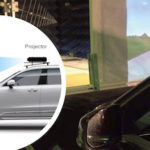In production . of printed circuit boards (PCB) signal skew will be introduced in differential traces due to the weave effect. A skew that will vary from PCB to PCB. This signal skew generates mode conversion that together with poor common mode properties, along the high-speed channel, will degrade the system performance. For example, might the skew effect give a crosstalk much higher than the pure differential crosstalk. If the poor common mode properties in the channel are high and the skew can be expected to be high enough, the channel performance will be affected. Some PCB’s, with right combination of skew, might fail with too high bit error rate (BER) and other PCB’s will work.










